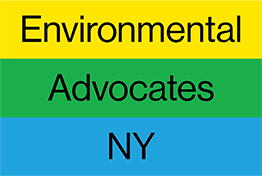The Regional Greenhouse Gas Initiative is one of largest efforts in the country to reduce carbon pollution, deliver energy-bill savings for families and create clean-energy jobs. Now we need to make it work for all of New York’s communities.
The following OPED was published on July 10, 2018 in Crain’s New York Business. It was written by Conor Bambrick, air & energy director at Environmental Advocates NY and Annel Hernandez, associate director of the New York City Environmental Justice Alliance.
Cuomo must invest in climate justice
Environmental fund is repeatedly raided and doesn’t serve the poor
The Regional Greenhouse Gas Initiative is one of largest efforts in the country to reduce carbon pollution, deliver energy-bill savings for families and create clean-energy jobs. Now we need to make it work for all of New York’s communities.
Through online auctions, power plants in nine states—New York, Connecticut, Delaware, Maine, Maryland, Massachusetts, New Hampshire, Rhode Island, and Vermont—purchase allowances for each ton of carbon pollution they emit. Proceeds from these auctions are distributed to the states, and reinvested in energy efficiency, renewable energy, and other measures that help reduce further emissions and protect the environment.
Here in New York, RGGI (pronounced “Reggie”) auctions have generated more than $1 billion for environmental and climate initiatives. But a new analysis from Environmental Advocates NY shows that Gov. Andrew Cuomo should do more—a lot more—to ensure that revenue it generates is invested in programs and policies that help New Yorkers who need it most.
Low-income communities and communities of color are disproportionately harmed by pollution, energy costs and climate change, as highlighted in a recent report by the New York City Environmental Justice Alliance. Yet frontline communities’ access to RGGI funds and other energy investments that can help drive emission reductions has been limited. This is a political choice that Cuomo needs to change.
For the past five years, New York has used RGGI funds to plug state budget holes and subsidize power rates for wealthy Long Island communities. Beginning in 2013, the New York State Energy Research and Development Authority (NYSERDA) began directing significant RGGI funds to the Long Island Power Authority. As of September 2017, NYSERDA had budgeted more than $208 million for Long Island. Meanwhile, LIPA has cut its own spending dramatically, because Cuomo is effectively picking up the tab.
Since 2015, New York state budgets have also siphoned RGGI funds from NYSERDA for energy-tax credits and payments to schools and local governments that have seen a falloff in tax collections from power plants. However worthwhile, filling state and local budget gaps is inconsistent with RGGI’s purpose, and will slow New York’s progress toward a renewable-energy economy.
Following RGGI dollars lays bare Cuomo’s political priorities, and it has not been a fair distribution of resources. For years, Cuomo has funneled RGGI dollars into programs and regions that do little to serve low-income New Yorkers.
Consider Green Jobs, Green New York. A signature RGGI program, it has created a loan fund to help families and small businesses reduce their energy bills and invest in energy saving improvements to businesses and homes. The investment created jobs and has helped nearly 20,000 middle-income households invest in energy-saving home improvements such as air sealing, insulation and efficient heating and cooling systems. But, it has failed to reach too many people, especially renters, low-income New Yorkers and New Yorkers with poor credit.
Now approaching its 10th year, RGGI is at a turning point. This multi-state effort to cap power plant pollution throughout the Northeast and Mid-Atlantic is adopting changes that will guide it through the next decade.
New York must aggressively invest RGGI auction revenues to help vulnerable and under-resourced communities. Long Island has enjoyed years of benefits from RGGI. Now, a much larger percentage of the RGGI funds in New York should go toward programs and grants that support local energy planning and job creation in low-income communities.
Bottom line: Cuomo must provide more leadership to steer RGGI in the direction of the empowerment of disadvantaged communities on the front lines of climate change across New York.

